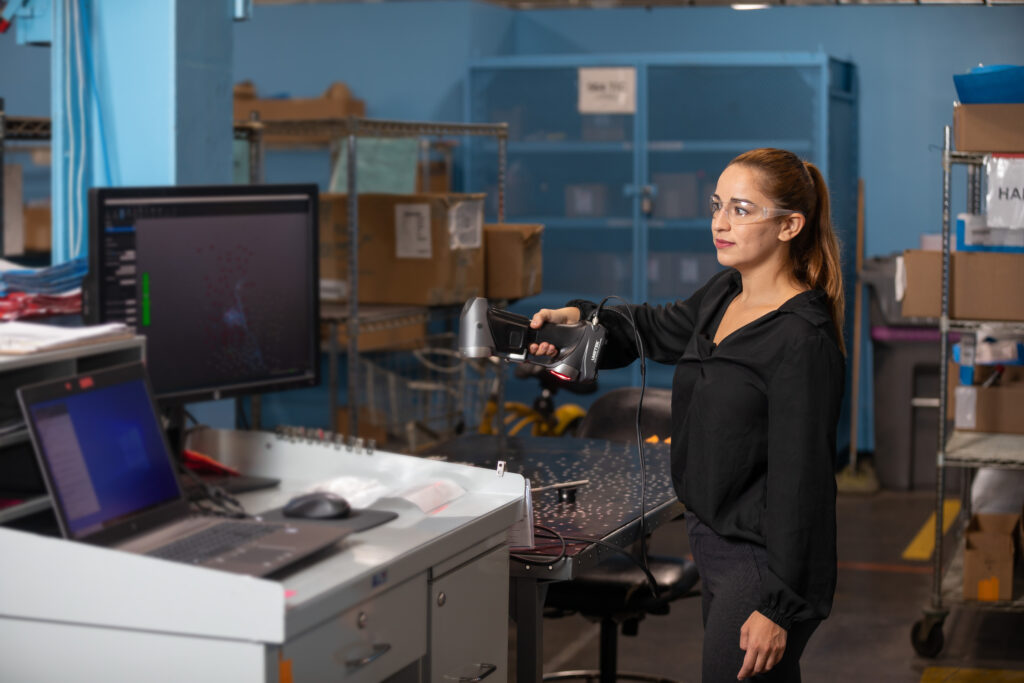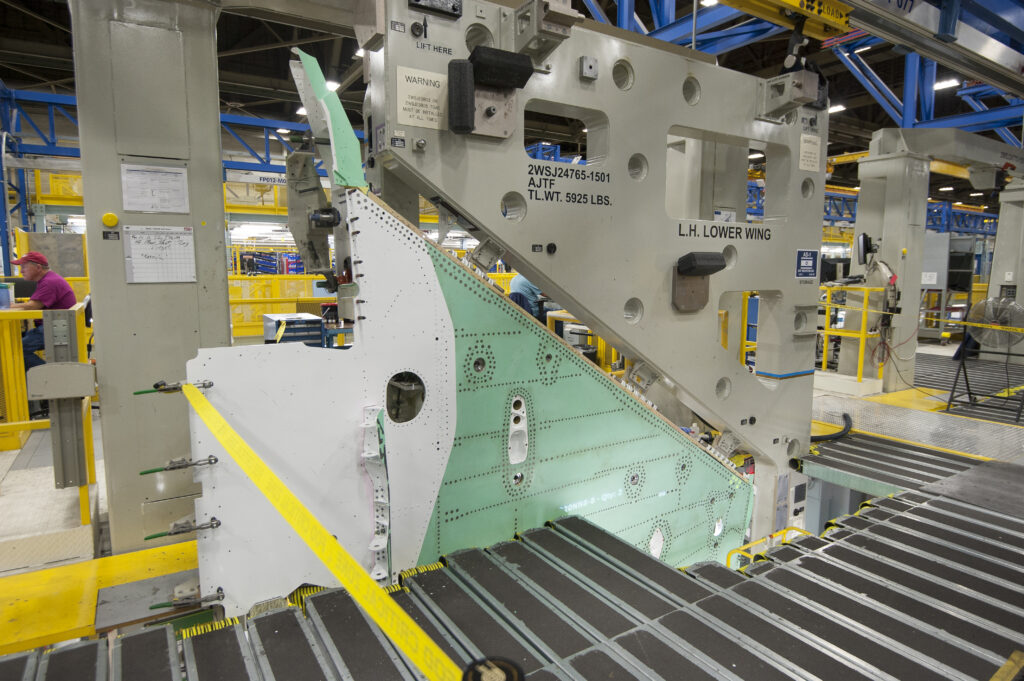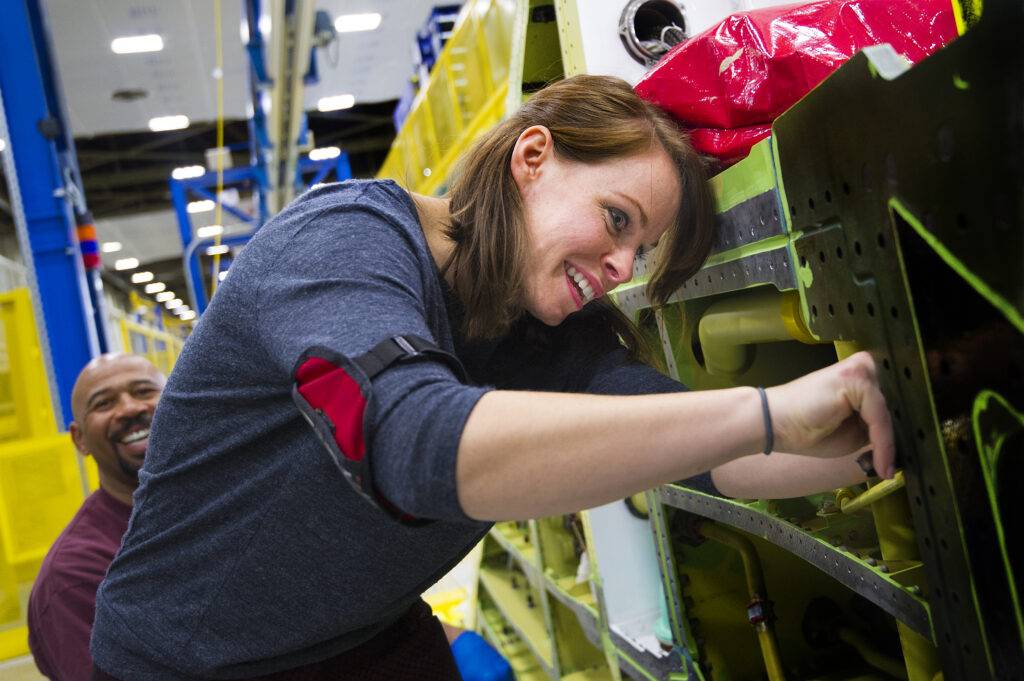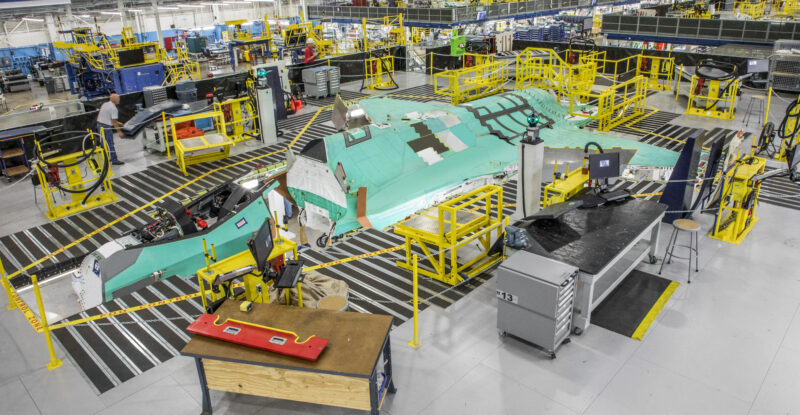Roughly half of Lockheed Martin’s 121,000 employees around the world are scientists and engineers so it’s critically important that the aerospace and defense manufacturer builds a pipeline of highly trained technical talent. That’s among the reasons why much of Lockheed Martin’s work in the social impact space is focused on advancing science, technology, engineering and math (STEM) education for young people.
“[W]e want to build a workforce that we think is important for the country and is our future workforce too,” Lockheed Martin communications director Ken Ross stated candidly during a 30 October media briefing at Lockheed Martin’s Aeronautics headquarters in Fort Worth, Texas.
To achieve its goal in Fort Worth, Lockheed Martin works closely with the city’s Mayor Mattie Parker who “understands the value of education and how that fits into the economic development of the region, and has been a key component,” Ross said.
“She has a Council on Education & Workforce Development. We are active participants in that, in working with other business partners, school leaders and such to make sure that we’re providing the input that will help make sure that our schools are producing work ready or college ready, service ready people.”

Lockheed Martin Aeronautics Company, Fort Worth. Image: Chris Hanoch
Lockheed Martin also partners with a variety of non-profits, including long-time strategic and national partner Project Lead The Way (PLTW) which for nearly three decades has worked to unlock the potential of millions of students and their teachers by developing STEM curriculums for use in elementary, middle and high schools across the country.
Project Lead The Way
Several school districts in Fort Worth’s county seat, Tarrant County, offer PLTW courses — Arlington, Crowley, Fort Worth, and Keller, which represent close to 40 high schools.
By Grade 6, with a focus on building career awareness, students are given the opportunity to explore a raft of PLTW ‘Gateways’ in a hands-on fashion, including flight and space, coding and robotics, energy and the environment, and the science of technology.
“As you go up, when you get into high school, it breaks out into ‘here is the basics of engineering,’ ‘here’s aeronautical engineering,’ ‘here’s medical technology.’ We support the engineering and aerospace curriculum as well as the computer science and cyber curriculum that they develop,” explained Ross.
The PLTW aerospace engineering course, for example, enables students to bring concepts to life by designing and testing an airfoil, propulsion system, and a rocket.
But Lockheed Martin’s partnership with PLTW extends beyond grants and employee involvement in curriculum advisory. It includes a prominent high school internship program for PLTW students in Tarrant County which has led to full-time job offers with the company for select participants.
“The school districts we’re involved with all have Project Lead The Way as part of their curriculum, and the students that apply for us have to have taken at least one high school Project Lead The Way class,” Ross said.
He shared the story of Mia Flores, who discovered a passion for STEM in high school through a PLTW program in the Fort Worth Independent School District (ISD). Flores was selected by Lockheed Martin for its internship program at the Aeronautics plant, which builds F-35 Lightning II fighters.

Lockheed Martin Aeronautics Company, Fort Worth. Image: Beth Steel
“Looking back, it’s crazy to think they would allow a 17-year-old like me, who at the time didn’t have a college degree — let alone a high school diploma — have this kind of opportunity,” she enthused during a 2022 discussion led by Mayor Parker, as reported by Fort Worth Report.
After high school, Flores attended University of North Texas for an engineering degree. But throughout college, she returned to Lockheed Martin to complete summer internships. Before she went back to college for her senior year, she had a job offer in hand.
“Now she’s one of the engineers on our F-16 program,” noted Ross.
Flores was later featured on the cover of North Texas Next, an educational magazine that counts Lockheed Martin as a sponsor and is distributed to middle and high school students across Dallas-Fort Worth and surrounding areas to excite and engage them as they think about their future.
“We started with five interns,” Ross said of the Lockheed Martin Aeronautics Internship Program in Fort Worth. “We’ve been up as high as 50. We’re at about 20 this year. And when we look at, from 2014 to today, our retention rate is about 65% and that, to me, is phenomenal.”
FIRST Robotics
Outside of the classroom, and as part of a national partnership, Lockheed Martin is also actively involved in the non-profit FIRST Robotics, an after-school activity where students build robots and learn the skills to sell and market the technology.
“We have mentors that go out there, and when a school has a Lockheed Martin mentor on their FIRST Robotics team, FIRST Robotics provides that school a stipend to help run that program,” said Ross. “These are ways that we try and make sure we’re visible and available in the community to drive positive outcomes for that workforce development.”
T3 Partnership
Lockheed Martin also provides support to the Tarrant To & Through (T3) Partnership, a unique non-profit that aims to ensure more students in Tarrant County obtain a postsecondary credential and that each student has the training and skills they need to thrive in the workforce.
“Their main focus at the beginning was counseling, so going into middle schools and not counseling on what courses to take, but ‘what do you want to do when you get out of high school?’ And then mapping back to what you need to do to accomplish that. So it’s creating a thought process that wasn’t natural in the schools, and it’s helping students pick the right courses to get where they want to go, and that has been a key driver,” Ross said.
Generating interest in the trades is deeply important. Facilitating that work is the Pat Lane Center, a non-profit technical school and ‘Community Learning Center‘ located next door to Lockheed Martin Aeronautics.
“The one here does a lot of work with composites and coatings, which provide the basic knowledge and experience for folks to come in and work out on the production line,” Ross explained. “And then we have a little training center inside our facility where we school people up further for the specific role they’ll have. Tarrant County Community College also has a program up in Alliance that we work with to make sure that, you know, there’s pathways for folks in those technical schools.”
Lockheed Martin’s Aeronautics division has about 35,000 employees worldwide, including 19,500 employees in Fort Worth. Less than 20 miles away, in Grand Prairie, Texas, sits another significant site for Lockheed Martin: Missiles and Fire Control, which boasts about 4,000 employees.
“So that’s the breadth of Lockheed Martin just here in the DFW complex,” Ross noted. Little wonder, then, why Lockheed Martin needs to keep that talent pipeline flowing.

Bekah Grace inspects the wing for FOD prior to customer inspection. Lockheed Martin Aeronautics, Fort Worth. Image: Angel DelCueto
Related Articles:
- Fort Worth Economic Development soars including in aerospace
- First female F-16 pilot of Turkish Air Force shares her story
- From F-16 fins to aircraft cabins, Collins advances thermoplastic tech
Featured Photo from Lockheed Martin Aeronautics is credited to Angel DelCueto













